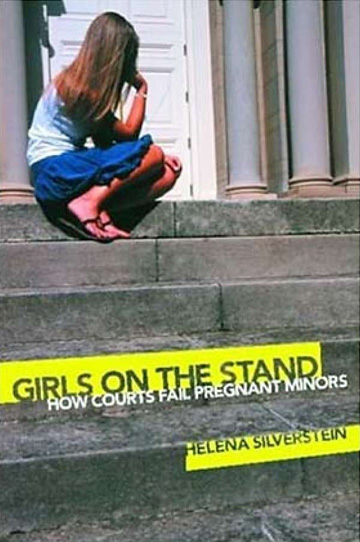
Young, Pregnant, and in Peril
July 8, 2007 | San Francisco Chronicle
The law of abortion frequently hinges on safety valves. For instance, it has long been the law that a state can outlaw late-term abortions so long as it provides certain exceptions, including for the life or health of the mother. The Supreme Court lately called this into question when it upheld the federal Partial-Birth Abortion Ban Act, which contains an exception for the mother’s life but not her health. In other words, a doctor charged with the federal crime of performing an intact dilution and extraction (the technical term) cannot claim in defense that under the circumstances it was the safest abortion procedure. The ruling’s impact could be huge.
Another safety valve pertains to parental notification laws, in place in 44 states, that require minors seeking abortions to notify or obtain consent from a parent first. Strong considerations support these laws: Parents need to know if their children are in trouble, physically and emotionally, and should have a say in such a profound decision. But the court has held that parental notification laws must contain a bypass procedure so that parents don’t wield a veto over their daughters’ decision. Equally powerful factors are at play here: What if the father raped his daughter, or if the parents would harm the girl (or the boyfriend) upon finding out she was pregnant? The minor can petition a judge — usually in a juvenile or a state trial court — who must grant a bypass if the young woman is mature enough to decide for herself, or if an abortion would be in her best interest.
That’s the law; what’s the practice? Helena Silverstein, a political scientist, surveyed the courts charged with implementing the parental bypass in Alabama, Tennessee and Pennsylvania. Over the phone, her researchers asked about the process and pointedly didn’t correct court personnel who assumed that they were girls in trouble. Silverstein’s findings, which range from disturbing to appalling, are set out in “Girls on the Stand: How Courts Fail Pregnant Minors.”
The bad news first. (That is, bad news for the solid majority of Americans who are pro-choice but favor reasonable restrictions on abortion.) A handful of judges in Alabama let their personal views overwhelm their responsibilities. Several require minors seeking a bypass to attend evangelical anti-abortion counseling centers, where they are shown graphic abortion videos, browbeaten for not “choosing life” and encouraged to be born again. Two other judges have taken to appointing an anti-abortion activist as guardian for the fetus, turning what was designed to be a simple fact-finding hearing into an adversarial process in which the young woman is painted as a would-be murderer and the attorney as a defender of the unborn.
Now the good news. Several state supreme courts have rejected attorney appointments for fetuses in bypass proceedings, and a properly constructed First Amendment challenge to mandatory evangelical counseling could well succeed. More important, even the judges described above typically grant bypasses despite their hectoring; in several states for which numbers are given, 90 to 99 percent of bypass petitions are granted. The real problem is not defiant, anti-abortion judges — whose impact is limited and whose behavior will not withstand scrutiny from most appellate courts — but ignorant court personnel. Some 50 percent of the surveyed court employees and judges knew nothing about the bypass process, and couldn’t explain what a young woman should do.
Silverstein is outraged at this broken system and says we should scrap it, allowing unfettered access to abortion for girls of any age. This is terrible politics — it will never fly in a nation of parents — not to mention thoughtless policy. The reason that many court personnel knew little about the bypass procedure is because their court had never handled one before. It’s a rare process: Massachusetts courts, for example, received less than 500 bypass petitions over a four-year period in the 1980s.
Rather than giving up on the bypass, Silverstein should look for ways to fix it. There are analogous situations in which vulnerable parties need the courts’ help to proceed, such as filing complaints against judges. Federal courts, responding to concerns that their processes for judicial complaints were opaque, now helpfully post information and forms on their Web sites. Not all juvenile courts have Web sites, nor girls access to computers, but more and more will over time. A simple brochure made available to court personnel and the public could also help dramatically. In the meantime, referring minors to organizations such as Planned Parenthood is a decent safety net; Silverstein found abortion providers to be generally knowledgeable about the bypass process and willing to help.
The poisoned abortion debate in this country needs more compromises — messy though they may be — and fewer lines drawn in the sand. The considerations on both sides of the parental notification issue are too strong to be ignored, especially when the process isn’t beyond saving.